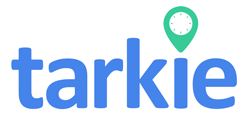Have you ever thought about how flexible work schedules can boost your team’s productivity and happiness? Today, flexibility is more than just a nice-to-have; it’s essential. As we face the challenges of modern work, flexible work options are key to better productivity and attendance.
A 2020 survey by FlexJobs found that 81% of employees would be more loyal if they could work flexibly. With more companies moving towards hybrid work models, the need for work-life balance is clear.
By offering flexible schedules, businesses meet their employees’ needs and foster innovation and growth. Studies show that flexible work leads to happier employees and lower turnover rates. This benefits everyone involved.
This section explores why flexibility is crucial in the workplace. It shows how it directly improves productivity and attendance systems.
Key Takeaways
- 81% of employees indicated increased loyalty with flexible options.
- 30% of employed Americans prefer remote work arrangements.
- 87% of employers plan to adopt greater flexibility post-pandemic.
- Flexibility can enhance retention and support diversity within organizations.
- Engaged, productive teams experience a 21% increase in profitability.
Understanding Flexibility in the Workplace
Flexibility in the workplace means giving employees choices on when and where they work. This flexibility is key for employee happiness and helps workplaces adapt. People value work-life balance as much as their salary when choosing jobs.
Flexible work options like remote jobs and flexible hours give workers more control. For example, working from home can cut down on missing work by up to 25%. This not only makes employees happier but also helps companies find more diverse talent.
Flexible work models can really boost how engaged employees are. For instance, working four days a week can make employees 15% more likely to stay. Flexible hours can also make people 10% more punctual and productive. Companies that offer non-traditional hours see less stress and burnout.
To show how different flexible work options affect employee engagement, look at this table:
| Flexible Work Arrangement | Impact on Employee Engagement | Potential Benefits |
|---|---|---|
| Remote Work | Improvement in morale by up to 20% | Access to a wider talent pool |
| Flextime | Increased punctuality and productivity by 10% | Enhanced work-life balance |
| Condensed Workweek | 15% increase in job retention | Better stress management |
| Job Sharing | 30% reduction in absenteeism | Greater employee engagement |
As workplaces change, flexibility becomes a crucial strategy for a healthy work environment. Companies that offer adaptable options tend to see better productivity and loyalty from their employees.
Defining Flexible Work Schedules
Flexible work schedules let employees adjust their work hours and where they work. This includes options like flextime, remote work, job sharing, and part-time work. These arrangements help a diverse workforce by being inclusive and flexible for different personal needs.
Flextime lets employees choose their work hours, giving them more freedom. About 80% of employees like these flexible options, which makes them happier at work. Those who enjoy these schedules are 70% more satisfied than those stuck in fixed hours.
Remote work is very popular today, thanks to the changing work world. It saves employees about 11 days a year by cutting out commute time. This helps them have a better work-life balance. Also, it cuts down operational costs by 40% for many companies.
Job sharing is another flexible option, where two people share one full-time job. It’s seen a 12% rise in use among companies. Part-time work, making up nearly 27% of the workforce, offers great chances for those wanting fewer hours but still wanting to work.
Companies that offer flexible work schedules see better morale and productivity. They can be 15-30% more productive. This shows that flexible work is good for both employees and the company’s success.
| Flexible Work Type | Benefits |
|---|---|
| Flextime | Increases job satisfaction and productivity |
| Remote Work | Saves time; reduces operational costs |
| Job Sharing | Enhances job opportunities; promotes collaboration |
| Part-Time Work | Provides flexibility for personal commitments |
The Importance of Employee Productivity
Employee productivity is key to a company’s success. It directly links to making more money and staying ahead in the market. By using productivity metrics, companies can see how well their team is doing and find ways to get better.
Studies show that flexible work hours make employees more productive. Letting them work when they’re most focused boosts their performance. A big 77% of workers want better work-life balance, which flexible hours can provide.
Being flexible also makes employees happier. When they know how their work hours are tracked, they feel more connected to their job. Companies using new time and attendance systems save time and reduce absences.
Also, giving employees control over their hours makes them 40% more productive. This freedom helps them manage their time better, leading to 15% more tasks done. Being flexible makes the workplace happier and more productive.
| Aspect | Benefits |
|---|---|
| Flexible Work Arrangements | 77% of employees seek better work-life balance |
| Employee Morale | Enhanced transparency leads to greater job satisfaction |
| Productivity Metrics | Companies see a productivity increase of 20-25% |
| Job Performance | 40% increase when employees have work hour autonomy |
How Flexible Work Schedules Enhance Employee Productivity
Flexible work schedules boost productivity by making employees happy and engaged. They let workers set their own hours and balance work and life better. Companies that offer this see their teams work harder and stay longer, leading to happier employees.
Many industries now see the benefits of flexible work. Employees feel less stressed and burnt out because they have more control over their schedules.
Employee Satisfaction and Morale
Flexible work makes employees happier and more loyal. Studies show 70% of those with flexible hours enjoy better work-life balance. This leads to less turnover and more commitment to the job.
Many workers say they’d choose jobs with flexible hours over others. This shows how important it is for job satisfaction and staying with a company.
Optimizing Natural Work Rhythms
Flexible schedules help employees work when they’re most productive. This can increase productivity by up to 50%. It lets workers tap into their creativity and work more efficiently.
Remote work also helps by allowing diverse teams without location limits. It’s a win-win for both employees and employers.
| Flexible Work Arrangements | Benefits |
|---|---|
| Flexible Work Hours | Increased job satisfaction, reduced sick days |
| Remote Work Options | Diverse workforce, decreased commuting costs |
| Compressed Work Weeks | Improved work-life balance, extra day off |
| Flextime Arrangements | Minimized emergency leave, better personal management |
The Impact of Attendance Systems on Workforce Management
Modern attendance management systems are key to better workforce management. They bring more transparency and efficiency. These systems help with flexible work and employee accountability.
They move away from old manual ways to new automated ones. This change cuts down on time theft, saving businesses about $11 billion a year.
Bad attendance tracking can cost a lot more than money. “Buddy punching” alone costs around $373 million yearly. Automated systems make tracking more accurate, cutting down errors by up to 90%.
They also save HR teams a lot of time. This lets them focus on more important tasks. Studies show a 50% time savings in managing attendance.
These systems also help analyze attendance data. HR can spot trends in absences, lowering rates by up to 20%. They also make payroll more accurate, cutting down errors by 44% and boosting employee happiness by 25%.
Real-time tracking helps employees be on time more often. It cuts tardiness by about 30%. This is crucial with more flexible work schedules.
The table below shows the financial benefits of using automated attendance systems:
| Cost/Benefit | Estimated Value |
|---|---|
| Annual loss due to time theft | $11 billion |
| Cost of buddy punching | $373 million |
| Annual absenteeism cost per shift worker | $2,660 |
| Potential savings per employee switching to daily updates | $52,000 |
| Improvement in staff punctuality with real-time tracking | 40% |
| Reduction in administrative costs | 30% |
| Decrease in late arrivals post-automation | 30% |
Automated attendance management systems make work smoother and fairer. They help employees feel more trusted and valued. Keeping attendance tracking efficient is key to a productive workplace that meets today’s needs.
Integrating Flexibility into Attendance Systems
It’s key for companies to adapt to their employees’ changing needs. This shift towards flexible work hours helps keep workers happy and productive. The right tech is crucial for managing both remote and in-office teams smoothly.
Adapting to Employee Needs
More companies are adopting flexible work schedules. This move boosts employee morale and job satisfaction. About 80% of workers say it makes them more productive.
Flexibility can be offered in many ways, like setting own hours or working from home. It leads to a better work-life balance. Studies show it can cut turnover by up to 25%.
Utilizing Time Tracking Software Effectively
Effective time tracking software is vital for flexible work policies. It cuts down on errors in manual timekeeping, giving more accurate data. Using biometric scanners or mobile apps can reduce mistakes by a lot.
Integrating attendance systems with HR can make scheduling 20% more efficient. It helps managers match staff with work needs. Real-time data on absences can also make attendance 30% more consistent.
| Benefit | Impact |
|---|---|
| Employee Satisfaction | Increases by up to 35% with flexible hours |
| Retention Rates | Reduction in turnover by 25% |
| Attendance Consistency | Improvement by 30% |
| Productivity Boost | Potential increase of 25% due to better work-life balance |
With the right tools and policies, companies can handle modern work challenges. They can meet employee needs without losing efficiency. For more on efficient employee tracking, check out employee tracking solutions.
Benefits of Flexible Hours Policy for Employees
Flexible hours policies bring many benefits to employees. They attract 80% of job seekers from millennials and Gen Z. This shows how much people want flexible work.
Employees with flexible schedules are 30% happier than those with fixed hours. This is a big difference in job satisfaction.
Flexible hours also help with work-life balance. About 70% of remote workers say it improves their balance. This leads to less stress.
Workers with flexible hours do better at their jobs. They are 15% more productive than those with traditional hours.
Companies also gain from flexible hours. They can be up to 13% more productive. This is because employees work better when they’re most focused.
Flexible hours can also save money. Companies in high-rent areas can cut costs by 30% by allowing remote work. Employees feel more valued, leading to a 25% drop in turnover.
Flexible hours policies also build trust. Companies that offer them see a 40% boost in employee engagement. For more on how to integrate flexible hours, check out this resource.
| Benefit | Impact |
|---|---|
| Job Satisfaction | 30% increase |
| Productivity Increase | 13% increase |
| Reduction in Turnover | 25% decrease |
| Decrease in Absenteeism | 17% decrease |
Flexible Work Arrangements in the Philippines
The way people work in the Philippines is changing. More people are choosing hybrid work models. Surveys show that many Filipino workers like working from home and the office. This makes them happier and healthier at work.
Case Studies of Local Companies
Many local companies in the Philippines have started using flexible work options. They’ve seen big improvements in how well their employees work. This is because less time is spent commuting and workers can work in places that suit them best.
These companies are also attracting workers from places like Cebu and Davao. This helps them grow and find the best talent.
Remote Work Arrangements and Their Popularity
Remote work is becoming more popular in the Philippines. It shows that people want a better balance between work and life. With a focus on mental health, workers look for jobs that support them well.
This trend is making hybrid work more common. It combines working together in the office with working alone at home. The use of digital tools is also key to managing teams that work from different places.
Challenges of Implementing Flexibility at Work
Adding flexibility to work life comes with its own set of challenges. Even though 84% of employees see it as key in job choices, making it work can be tough. One big problem is when some workers resist changes to how they work.
Matching flexible work with a company’s culture is also hard. A good culture is open and flexible. But, 56% of remote workers feel they’re missing out on company culture, showing a big gap.
Having different rules for flexible work makes things harder too. Companies with clear rules for remote work see a 30% boost in employee engagement. But, 34% struggle to keep everyone connected, which hurts teamwork.
To overcome these, companies should talk more with their workers. Showing the value of flexibility can make workers more open to change. This helps fit flexible work into the company’s culture better.
- 84% of employees prioritize flexibility when evaluating job offers.
- 63% would take a pay cut for more flexible work options.
- 41% prefer full-time remote work, while 26% favor a hybrid model.
- 57% believe flexible arrangements improve mental well-being.
- 78% report increased efficiency when working from home.
| Challenge | Description | Impact on Employees |
|---|---|---|
| Employee Resistance | Discomfort with changes to traditional work structures | Reduced adoption of flexible practices |
| Organizational Culture Alignment | Difficulty integrating flexibility into existing culture | Disconnection from company values |
| Inconsistent Policy Application | Varying application of flexible work policies | Decreased employee morale and trust |
| Communication Challenges | Difficulties in maintaining collaboration among remote teams | Lowered team cohesion and productivity |
The Role of Productivity Tools in Supporting Flexible Work
Productivity tools help a lot with remote work by making team communication better. In the Philippines, small and medium businesses can really benefit from these tools. They help manage tasks well, so teams can keep up good work standards.
Studies show that flexible work hours and the right tools make teams happier and more productive. Companies that use tools like time tracking see their employees work better. This leads to more efficient operations.
- Reduction of absenteeism rates by approximately 30%.
- Increase in creativity and innovation, with companies experiencing a 12% boost in new ideas.
- Establishment of a performance-oriented culture, enhancing engagement by as much as 30%.
Productivity tools also help employees manage their work better, leading to better quality and less burnout. Flexible work lets employees fit their work around their life, reducing stress and improving health. This approach boosts productivity and makes employees more loyal, with 76% feeling more committed.
| Aspect | Impact of Productivity Tools |
|---|---|
| Employee Accountability | 20% improvement in operational efficiency |
| Collaboration | 15% increase in team collaboration |
| Employee Turnover | Up to 50% reduction with flexible policies |
| Innovation | 12% boost in creativity |
Investing in productivity tools is smart for attracting and keeping good employees. Companies can attract up to 25% more top talent with flexible policies and the right tech. For Philippine SMEs, using these tools is key to boosting productivity and keeping employees happy.
Conclusion
Embracing flexibility in the workplace is more than a trend. It’s a game-changer that boosts both productivity and attendance. Flexible work schedules and systems bring many benefits, like better morale and higher retention rates. As work evolves, companies that focus on flexibility will likely lead the way.
Flexible work options can really help with attendance. Studies show a 22% boost in attendance in departments that use them. Also, using advanced systems like biometric authentication makes tracking attendance more accurate. This leads to less absenteeism and a better work-life balance for employees.
In short, adding flexibility to work policies is a big win for businesses in the Philippines and worldwide. By focusing on employee well-being through flexible schedules, companies can build a strong base for success and innovation. This is crucial as the work world keeps changing.




